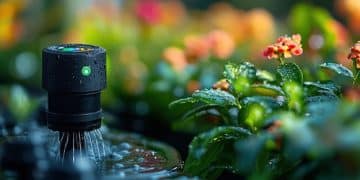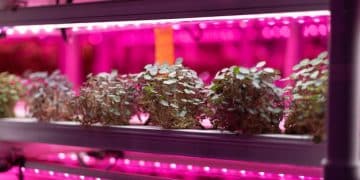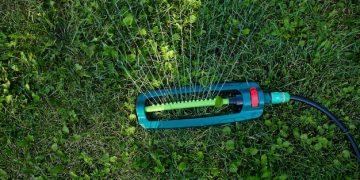Diy smart irrigation systems for efficient gardening
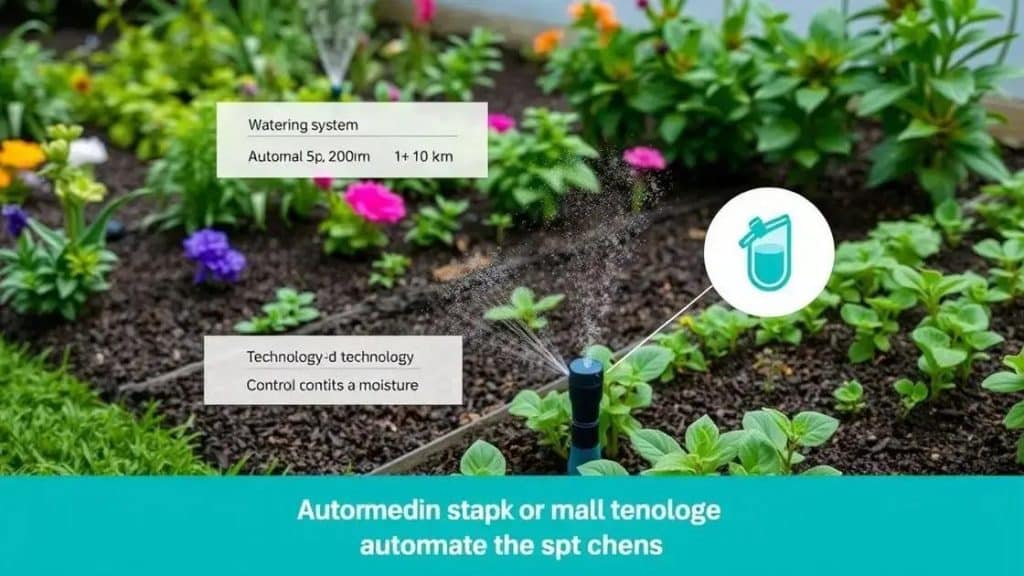
A DIY smart irrigation system uses sensors and smart technology to automate watering, ensuring efficient water use and promoting healthy plant growth.
Want to save water while keeping your garden lush? A diy smart irrigation system might be just what you need. In this article, we’ll dive into how you can efficiently care for your plants without wasting resources, all while enjoying the satisfaction of a hands-on project.
Understanding the basics of smart irrigation
Understanding the basics of smart irrigation systems is essential for any gardener looking to optimize their water usage. These systems are designed to intelligently deliver water to plants, ensuring they receive the right amount without wasting resources.
What is smart irrigation?
At its core, smart irrigation refers to technology that helps manage watering schedules based on specific conditions. By using sensors and weather data, these systems can adjust watering times and amounts, providing a sustainable solution for gardens and landscapes.
Key components of smart irrigation
Several key components make up a smart irrigation system:
- Sensors: Soil moisture and weather sensors gather data to inform watering schedules.
- Smart controllers: These devices process data and make real-time adjustments to the irrigation system.
- Irrigation heads: Specialized nozzles distribute water effectively to plants.
- Mobile apps: Many systems allow users to control and monitor irrigation from their smartphones.
By utilizing these components, gardeners can ensure their plants are properly hydrated while conserving water. for example, when rain is forecasted, the system will automatically skip watering, thus preventing over-watering. This not only helps the environment but can also lead to healthier plants.
The benefits of a diy smart irrigation system are numerous. They save time, reduce water bills, and promote plant health. Implementing this technology is not as complicated as it may seem. With a little research and some basic tools, anyone can create their own system.
As you explore the world of smart irrigation, consider your garden’s unique needs. Each garden is different, and by customizing your system, you can achieve the best results.
Benefits of implementing diy systems

Implementing diy smart irrigation systems offers numerous benefits that can transform your gardening experience. By taking the time to create your own system, you can enjoy better control over your garden’s watering needs.
Water conservation
One of the most significant advantages of a diy smart irrigation system is water conservation. These systems optimize water use based on specific plant requirements, minimizing waste. For instance, using sensors to measure soil moisture can help ensure that water is only applied when truly necessary, making sure that every drop counts.
Cost savings
Additionally, implementing a diy smart irrigation system can lead to substantial cost savings over time. While there may be initial setup costs, the reduced water bills will provide long-term financial benefits. Users often find that their water expenses drop significantly once they install these efficient systems.
- Efficient use of resources: Systems adjust watering schedules automatically based on weather conditions.
- Reduction in labor: Automated systems save time, allowing gardeners to focus on other activities.
- Increased plant health: Proper watering leads to healthier plants, which can yield better harvests.
Moreover, maintaining a diy smart irrigation system is relatively straightforward. Many systems provide easy-to-follow instructions for setup and management. This means that even if you’re not a gardening expert, you can still enjoy the advantages of smart technology.
The ability to customize your system is another appealing aspect of going diy. You can tailor it to match the specific needs of your garden layout, enabling better outcomes for your plants. This personal touch not only enhances the effectiveness of the system but also offers a sense of achievement and pride in your gardening efforts.
Step-by-step guide to building your own
Building your own diy smart irrigation system can be a rewarding project that enhances your gardening experience. This step-by-step guide will help you set up an efficient system tailored to your garden’s specific needs.
Gather materials
The first step is collecting all the necessary materials. You will need:
- Irrigation tubing: This will deliver water to your plants.
- Sensors: Soil moisture sensors help you monitor the water levels.
- Smart controller: A device that manages watering schedules.
- Connectors and stakes: These help secure the tubing in place.
Once you have all your materials, you can begin the setup process. Start by laying out your tubing according to the layout of your garden. Measure and cut the pieces to fit around your plants and ensure that all areas will receive adequate water.
Install sensors and controller
After positioning the tubing, the next step is to install the soil moisture sensors. Place them at various locations within your garden to ensure accurate readings. Connect them to your smart controller, which will be the brain of your system. Most smart controllers come with user-friendly instructions, so follow those guidelines closely.
Once everything is connected, program your smart controller. Set the watering times and duration based on your plants’ specific needs. You can adjust these settings later as you monitor the system’s performance.
Test the system
Now it’s time to test your diy irrigation system. Turn on the water and observe how well the system operates. Check for any leaks and ensure that all areas are receiving the right amount of water. Make adjustments as necessary to ensure optimal performance.
Regular maintenance is key to the longevity of your system. Keep an eye on the sensors and clear them of any debris. This will help maintain accuracy in moisture readings. It’s also wise to periodically check the tubing and connections to prevent any blockages or leaks over time.
Common mistakes to avoid in smart irrigation
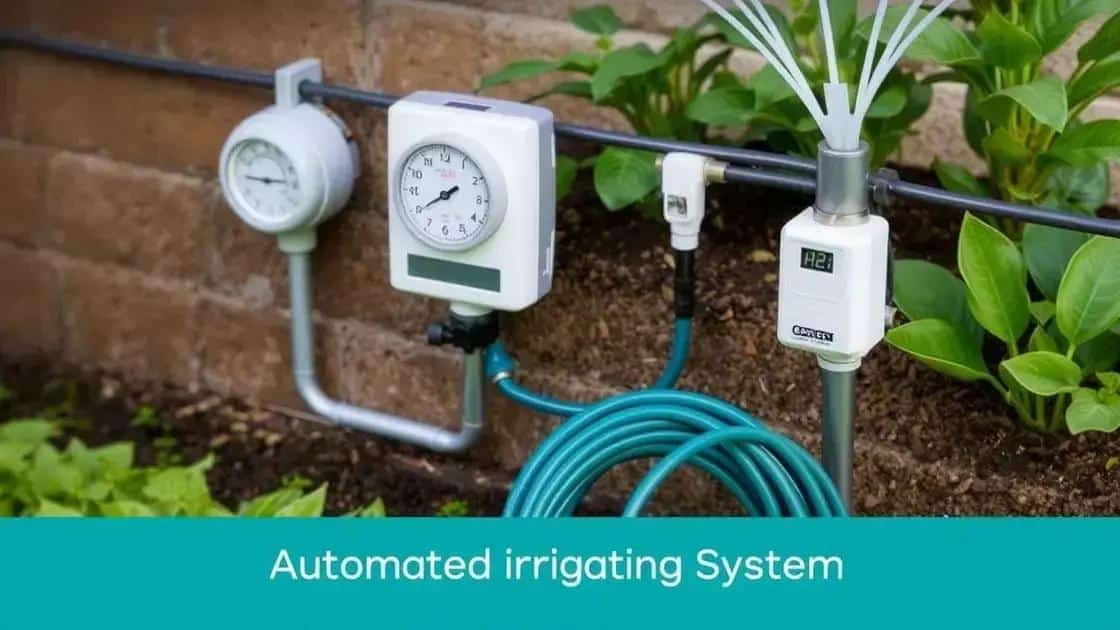
When setting up a diy smart irrigation system, avoiding common mistakes can make a huge difference in effectiveness and efficiency. There are a few pitfalls to be aware of during the planning and installation phases.
Overwatering
One of the biggest errors is overwatering your plants. Many gardeners underestimate how much water their plants truly need. To prevent this, monitor soil moisture with sensors carefully. Adjust your system to avoid unnecessary watering, which can lead to root rot and other plant diseases.
Poor placement of sensors
Another mistake is improperly placing the sensors. They should be installed in areas that reflect the overall garden conditions, not just in isolated spots. Make sure to place them where they can accurately measure moisture levels across different soil types and plant varieties. Incorrect placement can lead to inaccurate readings, causing your system to operate inefficiently.
- Check the local environment: Understand how sun exposure and shade impact soil moisture.
- Regularly inspect sensors: Keep sensors clean and free from debris to maintain their accuracy.
- Test the system: Run the irrigation system periodically, ensuring it covers all areas properly.
A common error is neglecting to set up a rain shutoff feature. It’s important to have a system that automatically adjusts based on rainfall. If you forget to do this, you may end up overwatering your plants after a storm, which is not ideal for plant health and can waste water.
Additionally, failing to program the smart controller correctly can lead to issues. Make sure to set appropriate schedules and adjust them based on seasonal changes. This ensures your garden receives the right amount of water without dousing it during rainier months.
FAQ – Common Questions about DIY Smart Irrigation Systems
What is a DIY smart irrigation system?
A DIY smart irrigation system is a self-installed watering system that uses technology and sensors to automate irrigation, ensuring efficient water use for your garden.
How can I avoid overwatering my plants?
To prevent overwatering, install soil moisture sensors that can monitor moisture levels and adjust watering schedules accordingly.
What materials do I need to build a smart irrigation system?
You will need irrigation tubing, sensors, a smart controller, connectors, and stakes to build an effective DIY smart irrigation system.
How often should I maintain my smart irrigation system?
Regular maintenance is crucial; check your system monthly to ensure sensors are clean, tubing is unobstructed, and settings are correctly programmed.
